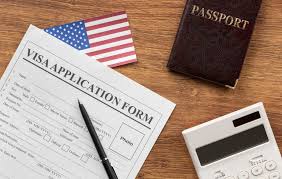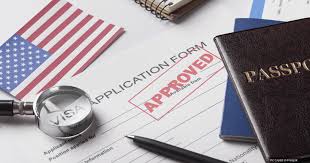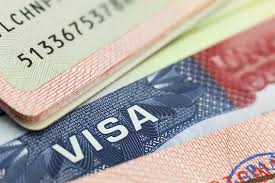How to Apply for a U.S. Tourist Visa: A Step-by-Step Guide

A U.S. tourist visa (B-2 visa) allows foreign nationals to travel to the United States for leisure, tourism, or medical treatment purposes. Unlike a work visa, a tourist visa is a non-immigrant visa designed for short stays. The U.S. tourist visa is issued for people planning to visit friends or family, enjoy a vacation, or receive medical care in the U.S. It is important to note that a B-2 tourist visa does not allow you to work or study in the United States.
In this guide, we will walk you through the process of applying for a U.S. tourist visa, including eligibility requirements, the application procedure, and useful tips for a successful visa application.
Eligibility Requirements for a U.S. Tourist Visa
To qualify for a U.S. tourist visa, you must meet certain eligibility criteria. These criteria are generally designed to ensure that applicants do not overstay their visa or intend to immigrate to the U.S. permanently. The key eligibility requirements include:
Purpose of Visit
You must prove that your primary purpose for visiting the U.S. is for tourism, which includes vacations, visiting family or friends, or receiving medical treatment. This means you must have a clear and well-defined reason for your visit.
Intention to Return to Your Home Country
Since a tourist visa is a non-immigrant visa, you need to demonstrate that you intend to return to your home country after your trip to the U.S. This is crucial, as the U.S. government must be confident that you do not plan to overstay your visa or stay permanently.
Financial Support
You must show that you have enough financial resources to support yourself during your stay in the U.S. This includes covering your travel, accommodation, and living expenses. Evidence of financial stability, such as bank statements, tax returns, or affidavits of support, is typically required.
No Criminal History
Applicants must have a clean criminal record. Any prior violations of U.S. immigration laws or criminal history may disqualify you from obtaining a tourist visa.
Sufficient Ties to Your Home Country
Having strong ties to your home country is one of the most important factors when applying for a U.S. tourist visa. Ties can include family, employment, property, or financial assets that compel you to return after your visit. The stronger your ties, the more likely it is that you will be granted a visa.
The U.S. Tourist Visa Application Process
The process of applying for a U.S. tourist visa involves several steps. Below is a detailed breakdown of each step to help you navigate the application process:
Step 1: Complete the DS-160 Form
The first step in the application process is to fill out the DS-160 form online. The DS-160 form is the official non-immigrant visa application form, and it requires personal information, travel plans, and details about your previous trips to the U.S. The form is available on the U.S. Department of State’s website.
Once you complete the DS-160 form, you will need to print the confirmation page with the barcode. This confirmation page is required for your visa interview.
Step 2: Pay the Visa Application Fee
After completing the DS-160 form, you must pay the visa application fee, which varies depending on your nationality and the type of visa you are applying for. The visa application fee for a U.S. tourist visa is typically around $160, though this fee may vary in some countries.
Payment methods and instructions for paying the visa application fee are provided on the U.S. embassy or consulate’s website in your country. Be sure to keep the receipt as proof of payment.
Step 3: Schedule Your Visa Interview
Once you have paid the visa application fee, you need to schedule your visa interview at your local U.S. embassy or consulate. You can usually schedule the interview online through the embassy’s website. The wait time for an interview slot can vary, so it is important to schedule your appointment as early as possible, especially if you have a specific travel date in mind.
Step 4: Gather Required Documents
Before your visa interview, you need to gather the necessary documents. Here is a list of common documents required for a U.S. tourist visa application:
- Valid passport: Your passport must be valid for at least six months beyond your planned departure from the U.S.
- DS-160 confirmation page: Print the confirmation page from the online DS-160 form.
- Visa application fee receipt: Proof of payment for the visa application fee.
- Passport-sized photo: A recent passport-sized photo that meets U.S. visa requirements.
- Travel itinerary: If available, provide a copy of your planned travel dates, flight bookings, and accommodations in the U.S.
- Financial documents: Bank statements, tax returns, or affidavits of support to show you can financially support yourself during your trip.
- Ties to your home country: Documents that prove your intention to return home after your visit, such as employment letters, property deeds, or family ties.
- Previous U.S. visas: If you have previously been to the U.S., provide details of your previous visits, including visas and entry stamps.
Step 5: Attend the Visa Interview
The visa interview is one of the most critical parts of the application process. During the interview, a consular officer will ask you questions about your travel plans, your background, and your ties to your home country. They will assess whether you meet the eligibility requirements for a tourist visa.
Make sure to answer all questions honestly and provide clear, concise information. If you are visiting family or friends, be prepared to provide details about them and the purpose of your visit.
Step 6: Wait for Visa Processing
After your interview, the consular officer will determine whether to approve or deny your visa application. If approved, your passport will be stamped with a U.S. tourist visa, and you will be allowed to travel to the U.S. Keep in mind that the processing time may vary, and in some cases, additional documents may be requested before the visa is issued.
Step 7: Receive Your Visa and Travel to the U.S.
If your visa is approved, you will receive your passport with the U.S. tourist visa affixed to it. Once you have your visa, you can make travel arrangements to visit the U.S. When you arrive at the U.S. port of entry, you will go through customs and immigration. Be prepared to show your visa and any supporting documents requested by the immigration officer.
Tips for a Successful U.S. Tourist Visa Application
Here are some helpful tips for improving your chances of obtaining a U.S. tourist visa:
- Be honest and accurate: Ensure that all the information you provide on your application and during the interview is truthful. Misrepresentation can lead to a visa denial.
- Provide strong evidence of ties to your home country: The U.S. government needs to be confident that you will return to your home country after your visit. Strong ties, such as a stable job, family, or property, can improve your chances of approval.
- Prepare for the interview: Be clear about the purpose of your visit, your planned activities in the U.S., and how you will support yourself during your stay. Being organized and well-prepared will show that you are serious about your trip.
- Start early: The visa application process can take several weeks, so be sure to start the process early, especially if you plan to travel during peak seasons like the summer or holidays.
Common Reasons for U.S. Tourist Visa Denials
Some common reasons for a U.S. tourist visa denial include:
- Insufficient ties to your home country: If the consular officer does not believe you will return to your home country after your visit, your visa may be denied.
- Incomplete or inaccurate application: Missing or incorrect information on your DS-160 form or other application documents can lead to delays or denials.
- Lack of financial proof: If you cannot demonstrate that you have the financial means to support yourself during your trip, your visa application may be rejected.
- Previous immigration violations: If you have previously overstayed a visa or violated U.S. immigration laws, this may result in a visa denial.
Conclusion: Enjoy Your Visit to the U.S.
Applying for a U.S. tourist visa can seem daunting, but by following the steps outlined in this guide and being well-prepared, you can improve your chances of obtaining a visa. Whether you’re visiting family, going on vacation, or seeking medical treatment, the U.S. offers numerous opportunities for tourism.
Start your application early, gather all required documents, and be clear about your travel intentions during the visa interview. With careful planning, you’ll soon be on your way to experiencing all that the U.S. has to offer.



